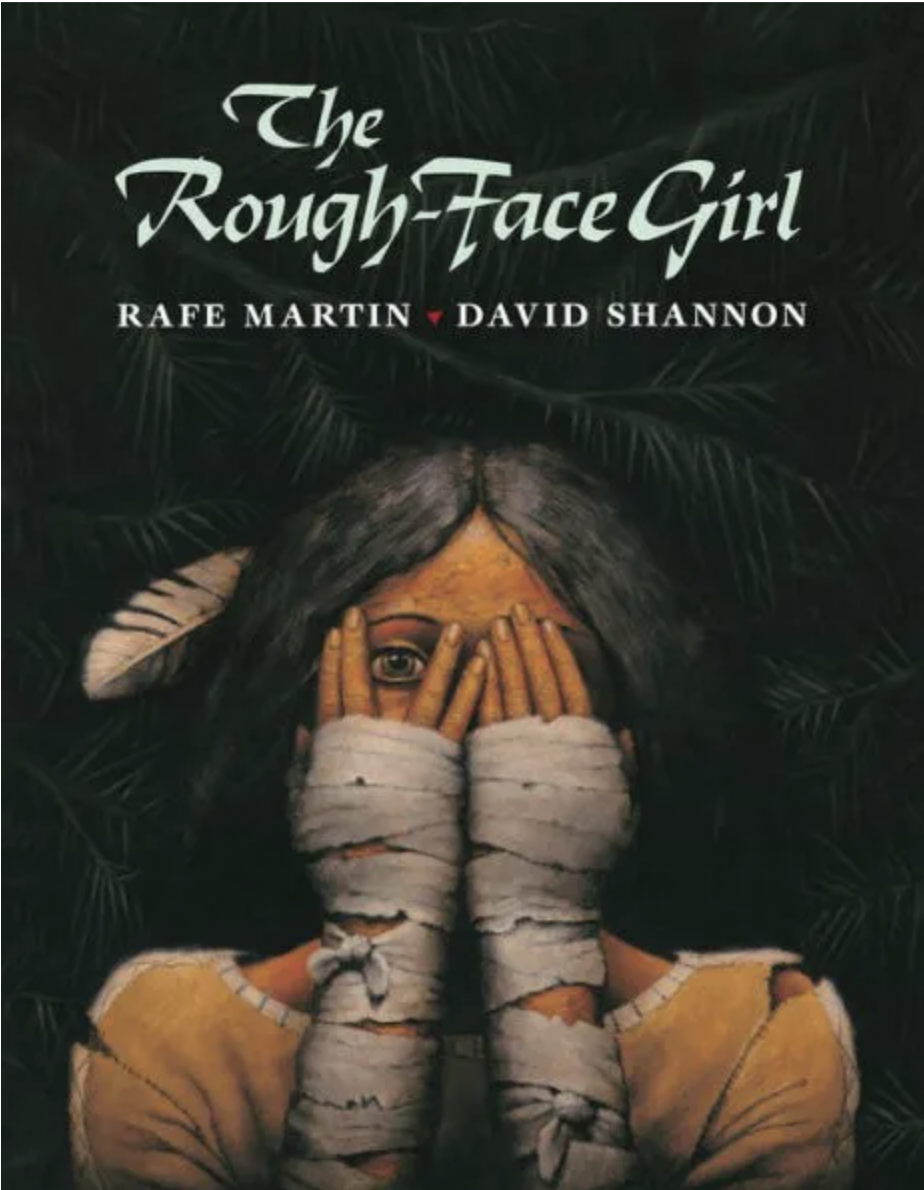
By Rafe Martin, illustrated by David Shannon
G.P. Putnam’s Sons, 1992
Picture book, 32 pages, ages 6-9
In this Algonquin version of the classic Cinderella story, a poor girl is made to sit and feed the fire. This scars her face and hands. Her sisters laugh at her for being so ugly and call her the Rough-Face Girl. One day, the two sisters decide that they are going to marry the Invisible Being, who no one has seen but is said to be powerful, rich, and handsome. Of course, the sisters insist that they’ve seen him and demand to marry him. However, they can’t answer three questions about him and are sent home ashamed.
An excellent Cinderella tale enriched by Algonquin folklore and culture.
The next day, the Rough-Face Girl goes to marry the Invisible Being, dressed humbly in old moccasins and a dress she made out of birch bark, because she can’t help but see him everywhere. She answers the three questions, proving that she has seen the Invisible Being. He then appears, sees beyond her exterior to the beauty within, and the two marry.
The Rough-Face Girl was first published 30 years ago so it has more words than modern picture books. But told by a master storyteller, most readers will hardly notice the higher word count. It might be a stretch for those with shorter attention spans to sit through. Kids who love fairy tales will probably love this book.
Both the author and illustrator are respectful in honoring Native American culture. According to their bios, they thoroughly researched the folktale, people, and culture. Not being Native American, I can’t speak to how accurate or correct they were, but as a reader, it was something I felt and appreciated.
This is one of my favorite versions of the Cinderella story because of its depth and emphasis on inner beauty. Instead of falling for the girl at first sight (like the prince does in a certain well-known animated movie), there is a sense that these characters know each other when they finally meet. The Rough-Face Girl is valued for who she is on the inside. Though she is transformed into a typical beauty at the end, it is after she is sat in the wife’s chair, signaling the Invisible Being’s intention to marry her. And the transformation is made, not to make her classically beautiful, but so that others can see how truly beautiful she is.
So why deduct half a star? I felt like there was a lot of ambiguity in the characters, which is both a strength and a weakness of the story. Of course, this is a picture book, so we’re not going to see all the layers of a character. But we never see Rough-Face Girl’s face until she’s beautiful. It’s a deliberate choice – perhaps to show how humble she is, or how hideous she is, or that she hides herself from others as a protection – but doing so closes her off from the reader. It’s difficult to connect with her as a character.
Overall, I thoroughly enjoyed the writing and illustrations and highly recommend this book.
The Rough-Face Girl gets 41/2 stars from this reviewer.